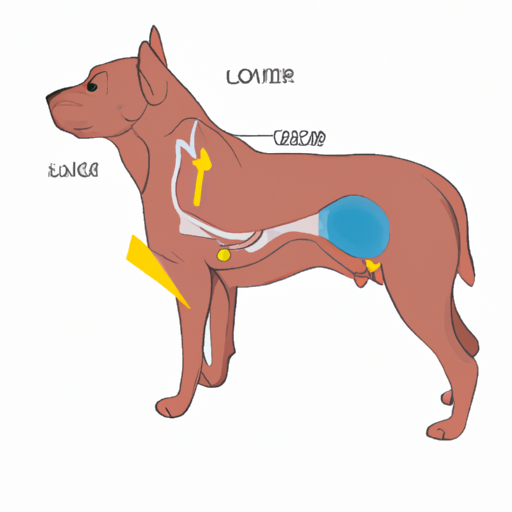Understanding Your Dog’s Anatomy
As a caregiver, there’s no doubt that you want the best for your furry friend. You already provide them with love, shelter, and food, but understanding their anatomy also plays a crucial role in ensuring their wellbeing.
Just like in humans, a dog’s liver is located in the abdominal cavity. Specifically, it’s located right behind the diaphragm and slightly to the right. It’s nestled amidst other organs such as the stomach and the intestines, making it well-protected.
The Importance of the Liver
You might be wondering, “Why should I care about my dog’s liver?” The liver is an important organ that performs various functions:
- Detoxification: The liver helps to filter out toxins from the body.
- Metabolism: It aids in the digestion and storage of nutrients.
- Production and Excretion: The liver produces bile, which is needed for digestion, and also excretes waste products.
Recognizing Symptoms of Liver Problems
Being aware of the symptoms of liver problems in dogs is crucial. Here are some signs that your dog might be having liver trouble:
- Loss of appetite
- Weight loss
- Jaundice (yellowing of the skin and eyes)
- Dark urine
- Lethargy
If you notice any of these symptoms, it’s important to get your dog to a vet as soon as possible.
Steps to Maintain Your Dog’s Liver Health
Maintaining your dog’s liver health isn’t as daunting as it may seem. Here are some steps you can take:
- Provide a Balanced Diet: Ensure your dog’s diet has the right balance of proteins, fats, and carbohydrates.
| Key Nutrient | Function |
|---|---|
| Protein | Essential for growth and tissue repair |
| Fats | Provides energy |
| Carbohydrates | Aids in digestion |
- Limit Toxins: Be mindful of the toxins your dog could potentially ingest, such as certain plants, human food, and chemicals.
- Regular Check-ups: Schedule regular vet check-ups to catch any potential issues early.
Frequently Asked Questions (FAQ)
Q: How can I tell if my dog has liver problems?
A: Symptoms may include loss of appetite, weight loss, jaundice, dark urine, and lethargy.
Q: What can I do to keep my dog’s liver healthy?
A: Provide a balanced diet, limit exposure to toxins, and schedule regular vet check-ups.
Q: Can a dog live with liver disease?
A: Yes, with proper treatment and management, many dogs can live comfortably with liver disease.
By understanding where your dog’s liver is located and its importance, you can better care for your furry friend. Remember, knowledge is the first step to becoming an even better caregiver.



